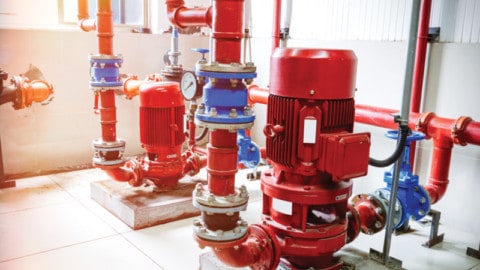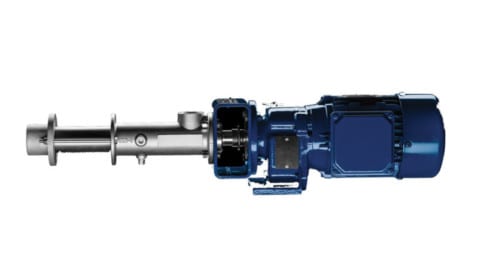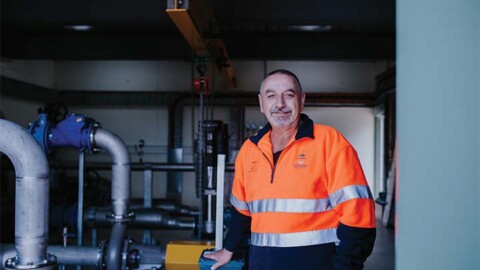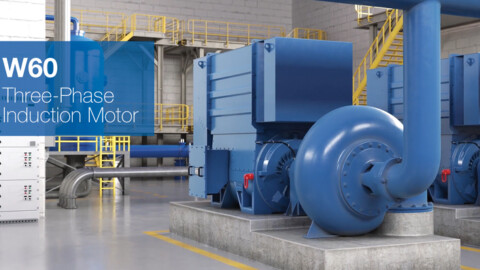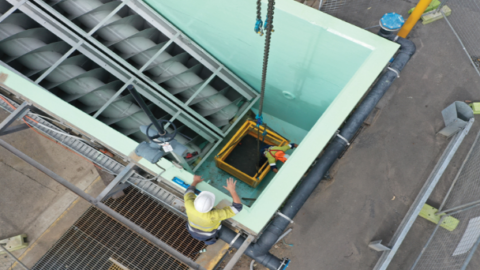Decarbonisation of industrial heat through electrification is key to not only reducing energy costs, but also tackling climate change. With geopolitical instability and increasing gas prices due to the Russia-Ukraine War, there is even more urgency to move away from fossil fuels. A recent report from the World Business Council for Sustainable Development (WBCSD) has highlighted the use of heat pumps for the electrification of heat as an opportunity to mitigate exposure to volatile natural gas prices, as well as reduce greenhouse gas emissions.
According to the WBCSD, heat from industrial processes accounts for 29 per cent of global energy demand and 15 per cent of all greenhouse gas emissions. This makes decarbonising industrial heat an area of opportunity for reaching net zero carbon emission goals.
Heat pumps are a great starting point for decarbonisation activities as they are easily scalable and have greater efficiency – particularly in light industry where there are typically lower temperature heating requirements. They are the only heating technology with potential thermal efficiencies above 100 per cent, meaning they can significantly reduce energy use, operational costs and emissions – and provide circular solutions so that one company’s waste heat can support another company’s heat needs.
Commercially available heat pumps, which are currently limited to heat supply of up to 200°C and therefore primarily used within light industry, could supply 37 per cent of the current industrial heat demand.
“The electrification of heat is critical to decarbonise industrial manufacturing operations: heat pumps are one of the few commercially available and commercially viable solutions that can be implemented at scale this decade.” – Mariana Heinrich, Director, Energy, WBCSD
However, despite their potential, the deployment of heat pumps has previously been limited due to technology barriers, insubstantial policy incentives and challenging energy market conditions. WBCS’s report, Industrial Heat Pumps: it’s time to go electric1, highlights the developments and trends creating a compelling business case for heat pumps.
It also provides guidance on selecting markets ready for heat pump deployment and key actions to help companies scale up industrial heat pump installations profitably – from combining heating and cooling to leveraging innovative financing mechanisms.
“Even prior to recent gas price inflation, clear market trends were making the business case to employ heat pumps in industrial heating applications ever clearer. Innovation in technology is making heat pumps capable of achieving higher temperature and, therefore, applicable to a wider range of industries. Innovation in applications is also creating unique business opportunities, through coupling of heat and cooling loads internally and externally – connecting to other businesses as well as district heating systems.” – Marcel Cremers, Principal Consultant, DNV
The size of the opportunity
In 2019, globally, industry consumed around 23,700TWh of energy for heating applications, compared to the annual electricity consumption – including heat generation – which was around 25,000TWh. And with industrial heat demand predicted to continue rising in the coming decades, electrification using low or zero carbon power presents an opportunity for decarbonisation and helping to reach net zero emissions goals.
The report states that in light industry where heating requirements are moderate, electricity from electric heaters and heat pumps will satisfy 40 per cent of heat demand by 2023 and 65 per cent by 2050, in comparison to other clean fuel sources such as hydrogen (20 per cent) and bioenergy (15 per cent) in 2050.
In particular, heat pumps in ultra-low heat applications (<100°C) are a mature technology and present a great opportunity for near-term action in electrifying up to eleven per cent of global heat demand. For low-heat applications (<200°C), heat pump technology is becoming increasingly commercially available due to research, development and demonstration work to improve efficiencies at higher temperatures.
To date, the global food, beverage and tobacco sector has seen the biggest uptake of heat pumps. This sector represents more than one quarter of all low temperature heat demand, and will likely continue to see this trend. More recently, there has been an increase in heat pump use at sites that require simultaneous low temperature heating and cooling in a combined solution.
There are limited opportunities for electrification in industries that have higher heating requirements – like iron, steel, cement and chemicals – due to the high energy density, energy flux requirement and physical design of the facilities, as well as a disinclination to replace large, capital-intensive equipment due costs associated with downtime, revenue loss, operational changes and staff training.
Heat pumps are also less common in industries that rely on both high temperature and low temperature processes, such as chemicals.

Barriers to uptake and leveraging changing market conditions
Despite the opportunities that heat pumps present, there are some key barriers that have so far limited their widespread development and use, including:
- Sub-optimal return on investment where there are high electricity prices relative to gas prices, combined with high capital expenditure requirements
- Volatile energy prices have made investment decisions to upgrade an industrial facility difficult in some environments
- A lack of policy support, historically low costs of carbon, and continued fuel subsidies have meant that traditional gas boilers have remained an economical choice for industrial heat applications
- Historically, heat pump applications have been restricted to (ultra) low temperature heat due to technological limitations
However, changes in energy markets, policies and technology are also helping, and will continue to help address barriers. For example, where there is a lower electricity-to-gas price, the deployment of heat pumps is more favourable due to lower operating expenditure costs.
Increasing costs for carbon and carbon capture – where applicable – is positively impacting this ratio by making electricity competitive.
Another trend improving the business case for heat pumps is the growing proportion of intermittent renewables into the energy mix,
which is increasing favourability for flexible power demand. There is also a trend of reducing technology capital expenditure costs driven by innovation, economies of scale and learning by doing.
According to predictions in the International Energy Agency’s Sustainable Development Scenario, the average cost of a vapor compression heat pump is expected to be 873 USD/kW in 2030 and 779 USD/kW in 2050, compared to 935 USD/kW in 2020.
At a government level, incentives to increase the deployment of heats pumps by setting quotas and targets could be introduced. For example, the European Commissions’ REPower EU initiative plans to increase heat pump deployment, with a target of ten million new installations by 2027 and 30 million by 2023.
Other incentive-based policy mechanisms will also help to increase the deployment of heat pumps. Economic policies such as tax reform and reductions in fossil fuel subsidies may make heat pumps more economically attractive, while policies targeting technological innovation can help drive the development of new and more efficient technologies.
Unlocking the potential for heat pumps
According to WBCSD’s report, there are a few key approaches that support businesses in scaling up industrial heat pumps which maximise the financial and strategic benefits they provide, including:
- Use scenarios for future utility and carbon prices to understand the lifetime costs of all options, and the policy and market risks associated with fossil fuel-based heat
- Seek opportunities to couple heating and cooling applications within or outside the business and leverage existing waste heat streams
- Pursue opportunities to make use of variable electricity tariffs and potential revenue generation opportunities by providing grid-balancing services
- Embrace alternative business models and financing mechanisms such as Heat as a Service
- Seize opportunities to minimise disruptions and capital costs by installing heat pumps
Take hold of the opportunity
Electrification is one of the most promising and scalable solutions to decarbonise heat – a crucial challenge for industry. When coupled with the procurement of clean energy, it offers a genuine opportunity to transition to a low or zero carbon heating system.
Today, heat pumps present a solution to electrify heat at lower temperatures and will be an increasingly relevant technology across many industrial heating applications, particularly in the light industry sector.
However, while introducing heat pumps into industrial processes is not always straightforward, now is the time to act to reduce reliance on volatile natural gas and oil costs, limit emerging policy risks, and futureproof operations.
To read the full report, click here.



